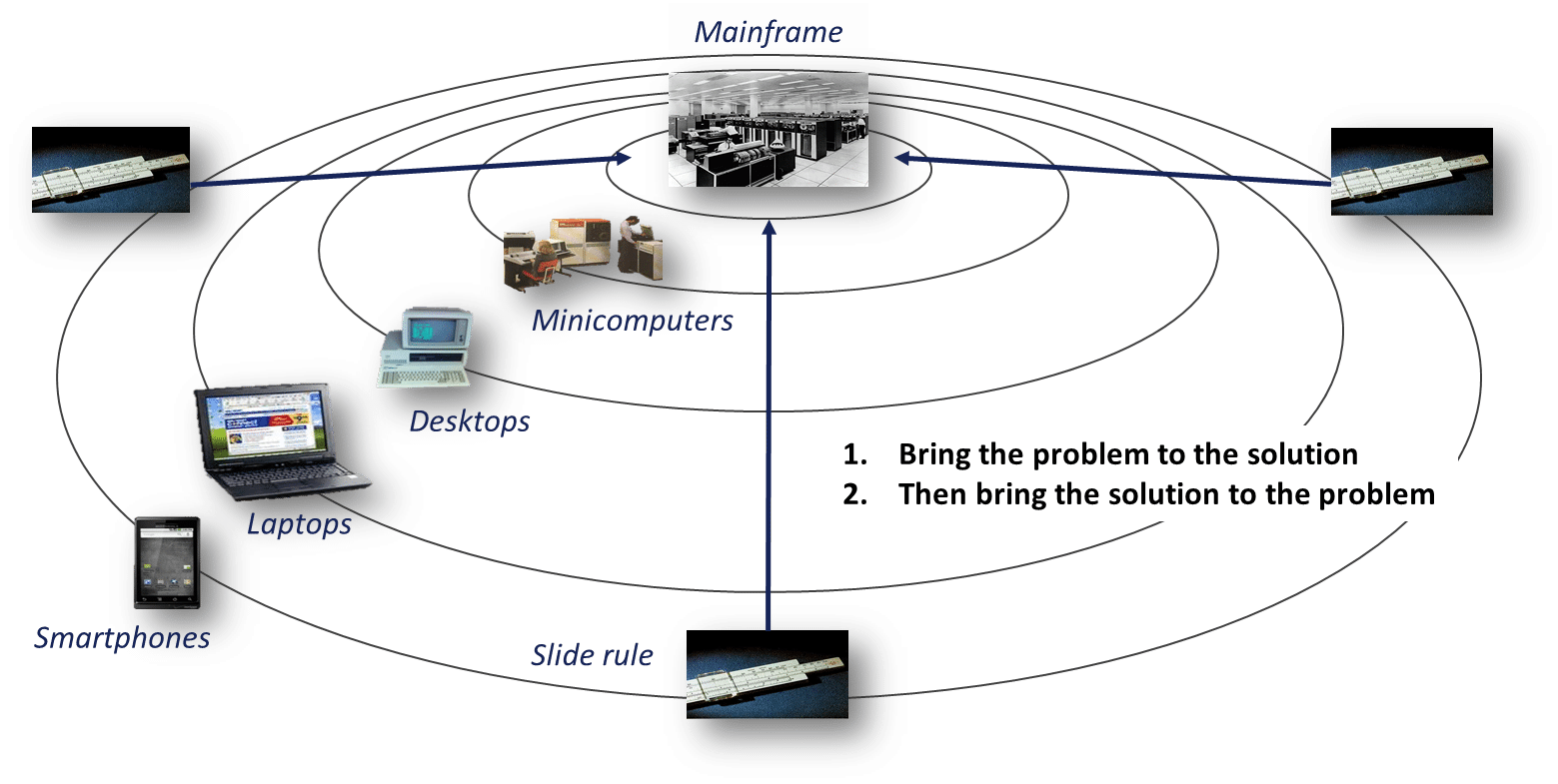Patient is a very appropriate word to use to describe consumers of health care. The term derives from both Greek and Latin words meaning ‘one who suffers.’ However, as medical patients many of us may identify with the more common definition of the word—to accept or tolerate delays. Patients in the US wait 21 minutes on average to see a doctor—though many of us have a wait-time horror story to tell that far exceeds the average. We understand there are some good reasons for waiting at doctors’ offices (see here for one such anecdote). However, the theory of disruptive innovation predicts that the waiting dynamic in health care is poised to be flipped.
In the image below, each circle represents a population of people that can access a product or service. In the center of the image the circles are small because only people with lots of money and lots of skill can access a product. This is the case with most brand new technologies when they enter the market. The progressively larger circles moving outward from the center represent larger populations of people with less money and less skill who can access the technology over time.
In the early days of a technology it is usually very expensive, complex, and requires great skill to use. When an industry is in that stage, people bring their problems to the centralized solution. Mainframe computers were this way. They were so expensive only the largest corporations and universities could afford one, and everyone at those organizations brought their computing problems to the centralized mainframe for processing. One example of this in health care is the high acuity surgical suite, where the best doctors and most sophisticated equipment are centralized. We’ll fly people in helicopters to these centralized locations because their services are so valuable and scarce…bringing the problem to the solution.
Over time simplifying disruptive technology often emerges that makes the solution more accessible to larger populations that have less money and less skill. In essence, the dynamic flips and users can begin to take the solution to the problem. In computing this simplifying technology was the microprocessor, which enabled computing technology to get smaller, cheaper, and simpler so that regular people like you and me could purchase and operate a computer in our own homes. Now with smart phones we have most of the computing power we’d ever need in our pockets and purses. In health care I would assert the simplifying technology is going to be some combination of the digital health solutions emerging today.
As these simplifying technologies emerge in health care, the need to take the problem (your illness) to the solution (the doctor in his or her office) will flip—the solution (doctors, or medical expertise) will come (in person or virtually) to the problem (your illness). This will begin with the simplest of conditions and eventually move upmarket to more complex diseases. We’re already seeing this start to happen with some very exciting emerging technologies and novel business models.
For example, HealthTap is a service that helps people connect with doctors online and ask them medical questions directly over a secure, private web-platform. This is, in a very simple way, bringing the solution (medical expertise) to the problem (your medical concern) on the patient’s terms. Doctors are in effect “waiting” for patients to submit questions.
Another example is Teladoc, which connects doctors with patients via phone or web-video consult. This still requires a wait (Teladoc reports a 24 minute average wait time), but the wait is from the comfort of your home or hotel room rather than at the doctor’s office. And the service is available 24 hours a day, seven days a week.
The service provided by HealthTap, Teladoc, or others like them is likely not as good as a full-length, in-person consult with a human being who knows and cares about you. But disruptive technologies almost always begin as ‘not good enough’ substitutes for complex, expensive products or services that overshoot or miss entirely the job the user is trying to get done in their life. We are optimistic that as these services, and others like them, get a foothold they will march steadily up market, improving their service and siphoning demand from traditional caregivers in traditional venues of care. As this happens, the day will not be far distant when doctors will hear the phrase, “the patient will see you now.”



